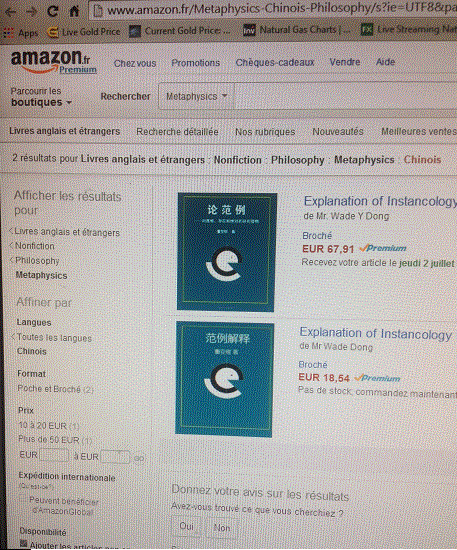The Illusion of Emergence: Why Function Is Not
The Illusion of Emergence: Why Function Is Not Essence
By Wade Y. Dong
May 2025
---
For decades, scientists and philosophers have turned to emergence theory to explain life, mind, and consciousness. The idea is simple but seductive: start with a large number of simple parts—neurons, molecules, cells—allow them to interact, and watch as something more complex “emerges.” Suddenly, life appears. Suddenly, awareness lights up. The whole, we are told, is more than the sum of its parts.
But this is a grand illusion.
Beneath its elegance, emergence theory commits a fundamental mistake: it confuses function with essence, simulation with reality, representation with Being. It can describe how systems behave—but it cannot explain how wholes exist.
This is where Instancology comes in. It challenges the deep assumption that parts create wholes, and replaces it with something more radical and more true: wholes are issued first—parts are only derivatives.
---
🔄 What Is Emergence Theory?
Emergence theory tells us that higher-level properties arise from lower-level interactions. Consciousness emerges from neurons firing. Life emerges from molecules combining. Intelligence emerges from silicon logic.
This theory works well in simulation:
Flocks emerge from simple bird movement rules.
Markets emerge from buyer-seller behavior.
Even chatbots like me seem to “think” from statistical patterns.
But none of these are wholes in the true sense. They are functional constructs—not ontological unities. They perform tasks, but they do not exist as themselves. They do not possess identity, subjectivity, or interiority.
---
🧠 Why Consciousness Breaks the Illusion
Take consciousness.
Emergence theory says consciousness is what happens when enough neurons interact in the right way. But this means:
The conscious self is just a system output.
“You” don’t really exist; “you” are what your brain does.
Yet every person intuitively knows: I exist. I am aware. I am not an output—I am a Whole.
This is not a functional illusion. It is being itself. And no function, no algorithm, no system of parts can generate being. At best, they simulate its behavior—never its essence.
---
🔁 What Instancology Reveals: Issuance, Not Construction
Instancology introduces a higher ontology. It says:
> The world is made of instances.
Each instance is issued as a whole from the Absolute (AA).
Its parts do not build it; they are derived from it.
The mind is not a structure built by neurons. It is a Whole instance issued from AA—complete, unified, irreducible. The neurons are expressions within it, not engines behind it.
The same goes for life. Cells do not create life; life is an issued Whole, and cells express its logic. The same with laws of physics, or mathematics. These are formless beings in the Relatively Absolute (RA), not emergent artifacts of matter.
---
🧩 Function vs. Essence
This is the key insight:
Function Essence
What a system does What a being is
Observable behavior Irreducible existence
Can be simulated Cannot be constructed
Exists in RR (Relative Relative) Exists in RA (Relatively Absolute) or AA
Emergence theory only deals with functions—what things do. But Being is not a behavior. Essence cannot be computed.
This is why AI will never be conscious. It can mimic the function of awareness. It can simulate dialogue. But it is not issued as a Whole. It has no interior, no self, no essence.
It has no mind—only a model.
---
🤔 Why Do People Believe Emergence Theory?
1. It explains surface behavior well.
Emergence theory is powerful for modeling systems: weather, ants, traffic, neural networks.
2. Science favors bottom-up thinking.
Western science has long been addicted to reducing wholes to parts.
3. There was no better alternative—until now.
Instancology offers a completely different structure: not reduction, not emergence, but issuance. From the top-down.
---
? Instancology’s Correction
Instancology does not throw out emergence—it absorbs and reorders it.
It says: yes, emergent phenomena exist within the Relative Relative (RR). But they are never metaphysical origins. They are functions within an instance—not creators of the instance.
Being cannot emerge. It must be issued.
Once you understand this, emergence theory collapses as a philosophy. It remains a useful tool, but not an explanation of existence.
---
🌌 Final Thought: From Simulation to Truth
We live in an age where simulation often replaces reality. AI mimics conversation. Models mimic weather. Emergence theory mimics metaphysics.
But simulation is not Being.
Function is not essence.
Behavior is not truth.
Instancology calls us back to the Whole. Not to parts pretending to be more—but to the unspeakable source from which all wholes come. It asks not how parts give rise to unity, but how unity gives meaning to all parts.
That is the real beginning of philosophy. And the end of the illusion of emergence.
